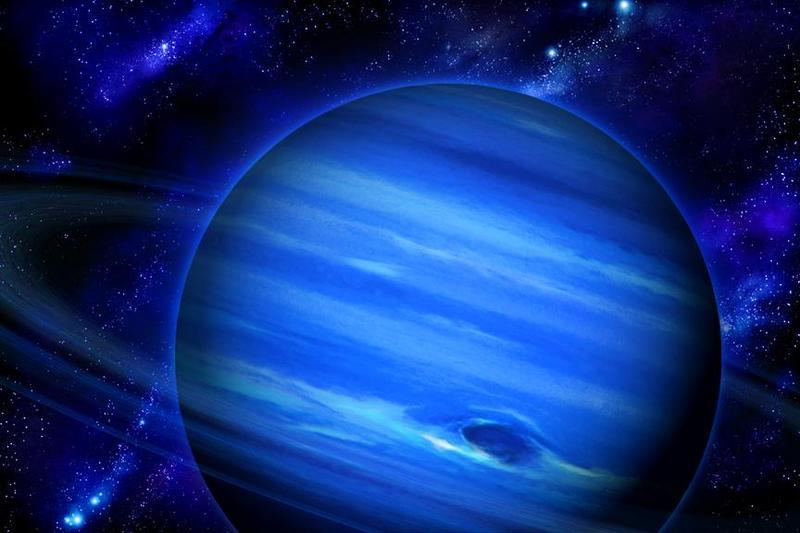Neptune’s Massive New ‘Dark Vortex’ Is As Big As The United States
Neptune’s Massive New ‘Dark Vortex’ Is As Big As The United States
An unusual new feature has appeared on Neptune: a “dark vortex” so massive that it would swallow the United States if it was here on Earth.
“Dark vortices coast through the atmosphere like huge, lens-shaped gaseous mountains,” Berkeley research astronomer Mike Wong, who led the team that analyzed the Hubble data, said in a news release. “And the companion clouds are similar to so-called orographic clouds that appear as pancake-shaped features lingering over mountains on Earth.”
A dark vortex on Neptune is a high-pressure system that usually is accompanied by bright “companion clouds,” NASA said.
“We speculate that these dark spots on Neptune (which are most visible at blue wavelengths) are probably ‘clear’ areas, openings in the cloud decks that see to deeper layers,” Heidi Hammel, a researcher at the Space Science Institute, told Astronomy magazine. “The bright companions (which are most visible at redder wavelengths) are thought to be higher-altitude clouds.”
Those companion clouds form by air being diverted over the vortex, which then causes gases to freeze, probably into methane ice crystals, NASA said.
The bright companion clouds were first spotted last summer by several observers, including amateur astronomers, who suspected that they might be indications of a dark vortex. However, since the vortex was best viewed in blue wavelengths, more detailed observation required aiming the Hubble Space Telescope at the feature.
Hubble’s image taken last month confirmed the vortex. While a similar feature was spotted by Voyager 2 in 1989, this was the first one seen on the planet in the 21st century.
“Neptune’s dark vortices have exhibited surprising diversity over the years, in terms of size, shape and stability (they meander in latitude, and sometimes speed up or slow down),” the space agency said. “They also come and go on much shorter timescales compared to similar anticyclones seen on Jupiter; large storms on Jupiter evolve over decades.”
Also on Thursday, NASA announced that it had extended Hubble’s science operations for another five years — until 2021.
“After the final space shuttle servicing mission to the telescope in 2009, Hubble is better than ever,” NASA said. “Hubble is expected to continue to provide valuable data into the 2020’s, securing its place in history as an outstanding general purpose observatory in areas ranging from our solar system to the distant universe.”
by Ed Mazza For The Huffington Post
Be the first to post a message!
